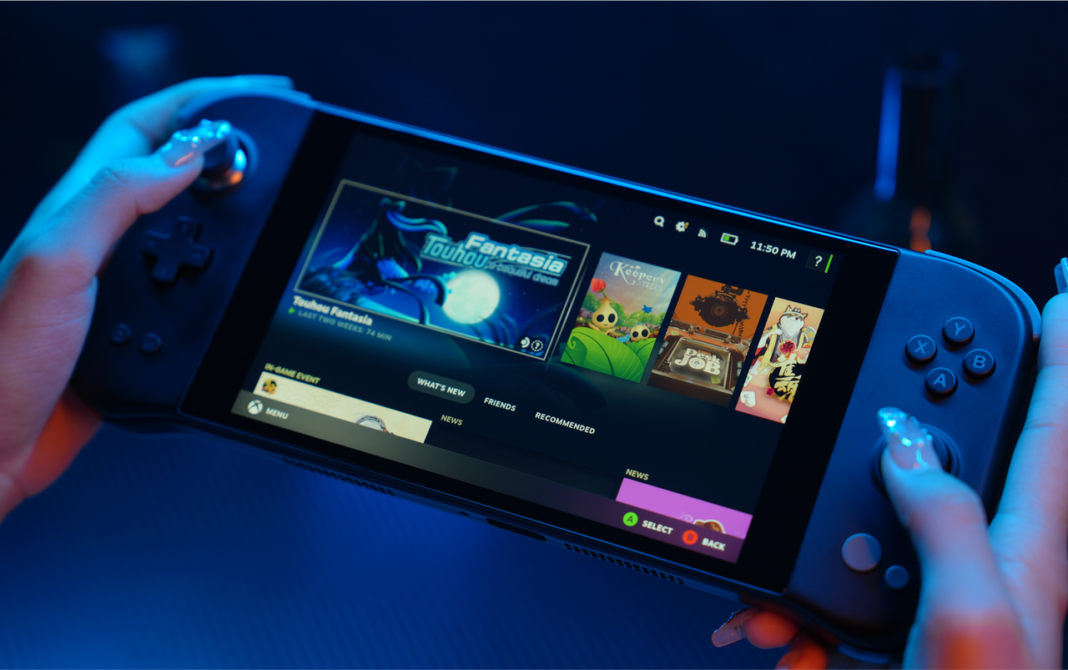Valve’s SteamOS Expansion: Lenovo’s Legion Go S and the Future of Handheld Gaming
Valve is set to revolutionize the handheld gaming world with its latest move to allow third-party handhelds to license SteamOS, starting with Lenovo’s newest offering, the Legion Go S. This collaboration marks a significant step towards expanding the reach of Valve’s acclaimed SteamOS beyond their own Steam Deck.
The Legion Go S, unveiled at CES 2025 by Lenovo, will feature a version of SteamOS, promising a seamless gaming experience for users with vast Steam libraries. This move opens up new possibilities for handheld PC gaming enthusiasts who are looking for a smooth and intuitive interface to navigate their favorite games.
Valve’s recent blog post confirmed that they are working on a beta version of SteamOS that will enhance the experience on other handheld devices, allowing users to download and test it themselves. This development signals a promising future for non-Steam Deck owners who can now enjoy the benefits of SteamOS on their handheld gaming PCs.
At IGN’s coverage of CES 2025, we got a sneak peek at the Legion Go S, a lighter iteration of Lenovo’s 2023 handheld, the Legion Go. While not a next-gen device, the Legion Go S boasts improvements under the hood and a more compact form factor. Lenovo is also teasing the Lenovo Go 2, equipped with the AMD Z2 Extreme APU, currently in the prototype phase, hinting at even more exciting developments in the handheld gaming space.
Are you ready to elevate your handheld gaming experience with SteamOS on your non-Steam Deck device? Stick around as we bring you all the latest updates from CES and delve deeper into the future of handheld gaming.
The Story So Far:
In a groundbreaking move, Valve announces the expansion of SteamOS to third-party handhelds, starting with Lenovo’s Legion Go S. This partnership aims to bring the benefits of SteamOS to a wider audience of handheld gaming enthusiasts, promising a smooth and intuitive gaming experience for users with extensive Steam libraries.
Review:
The Legion Go S, unveiled at CES 2025, offers a glimpse into the future of handheld gaming with its integration of SteamOS. This lightweight device builds upon the success of Lenovo’s previous handheld offerings, providing users with a more refined and efficient gaming experience. While not a next-gen device, the Legion Go S showcases improvements in performance and design, setting the stage for the upcoming Lenovo Go 2 powered by the AMD Z2 Extreme APU.
Conclusion:
Valve’s decision to expand SteamOS to third-party handhelds marks a significant milestone in the world of handheld gaming. With the Legion Go S leading the charge, users can look forward to a seamless and immersive gaming experience on non-Steam Deck devices. As the industry continues to evolve, the future of handheld gaming appears brighter than ever.
Frequently Asked Questions:
1. How does Valve’s decision to license SteamOS to third-party handhelds impact the gaming industry?
Valve’s move opens up new possibilities for handheld gaming enthusiasts, allowing them to enjoy the benefits of SteamOS on a wider range of devices.
2. What are the key features of the Legion Go S unveiled by Lenovo at CES 2025?
The Legion Go S offers a lighter form factor and improved performance compared to its predecessor, the Legion Go, making it a promising option for handheld gaming enthusiasts.
3. Will non-Steam Deck owners be able to install SteamOS on their handheld gaming PCs?
Yes, Valve has confirmed that a beta version of SteamOS will be available for download, enabling non-Steam Deck owners to experience the benefits of SteamOS on their devices.
4. What sets SteamOS apart from other handheld PC interfaces?
SteamOS is known for its smooth and intuitive navigation, making it an ideal choice for users with extensive Steam libraries looking for a seamless gaming experience on handheld devices.
5. What can users expect from the upcoming Lenovo Go 2 powered by the AMD Z2 Extreme APU?
The Lenovo Go 2, currently in the prototype phase, promises to deliver enhanced performance and features, setting a new standard for handheld gaming devices.
6. How does the Legion Go S compare to other handheld gaming devices on the market?
While not a next-gen device, the Legion Go S offers a compelling blend of performance, design, and portability, making it a solid choice for handheld gaming enthusiasts.
7. What are the potential implications of Valve’s collaboration with Lenovo on the future of handheld gaming?
Valve’s partnership with Lenovo paves the way for a more diverse and innovative range of handheld gaming devices, offering users a broader selection of options to enhance their gaming experience.
8. How can users stay updated on the latest developments in handheld gaming?
By following IGN’s coverage of events like CES and staying tuned to platforms like CineRecap.com, users can access timely updates and insights into the evolving landscape of handheld gaming.
9. What are some key considerations for consumers looking to invest in a handheld gaming device?
Factors like performance, design, compatibility with SteamOS, and future upgrade options should be taken into account when choosing a handheld gaming device to ensure an optimal gaming experience.
10. What role do advancements in handheld gaming technology play in shaping the future of the gaming industry?
As handheld gaming devices become more sophisticated and versatile, they are poised to drive innovation and redefine the gaming experience for users worldwide.
Tags:
Valve, SteamOS, Lenovo, Legion Go S, handheld gaming, CES 2025, Lenovo Go 2, AMD Z2 Extreme APU, gaming industry, gaming technology, IGN, CineRecap.
This rewritten article provides a comprehensive overview of Valve’s SteamOS expansion, Lenovo’s Legion Go S, and the future of handheld gaming, offering readers valuable insights and analysis in an engaging and informative format.

